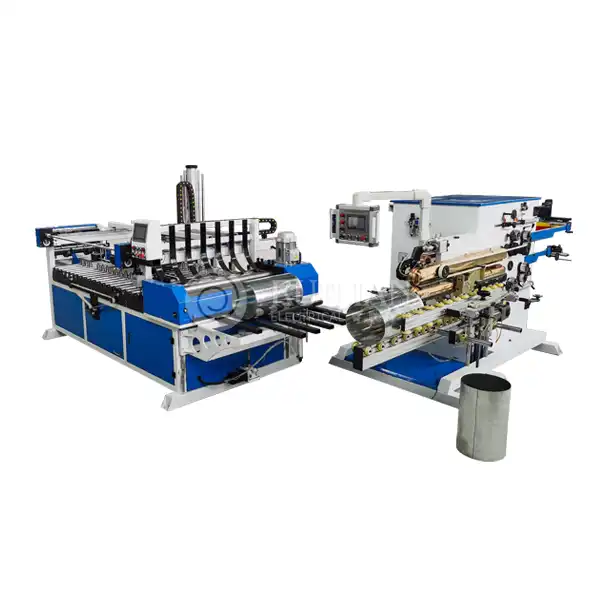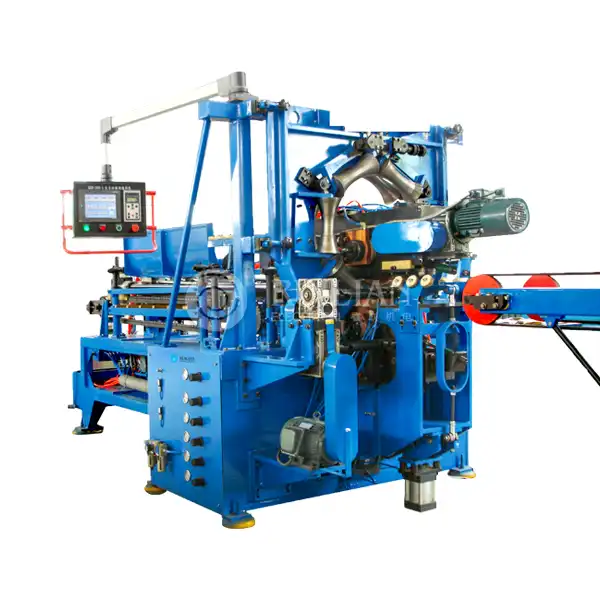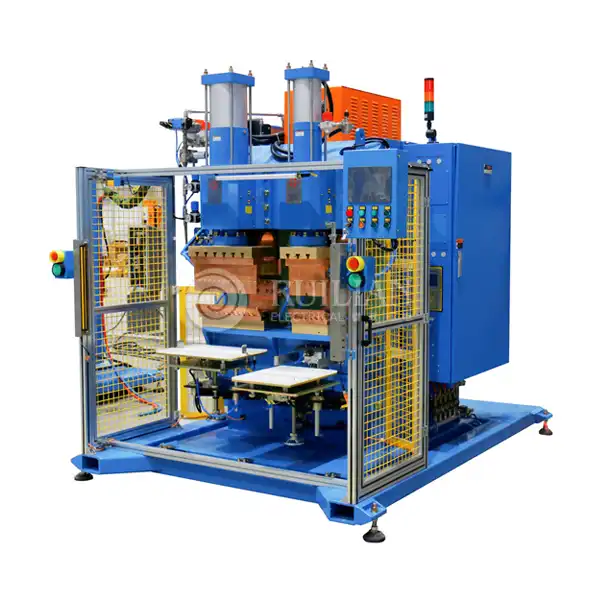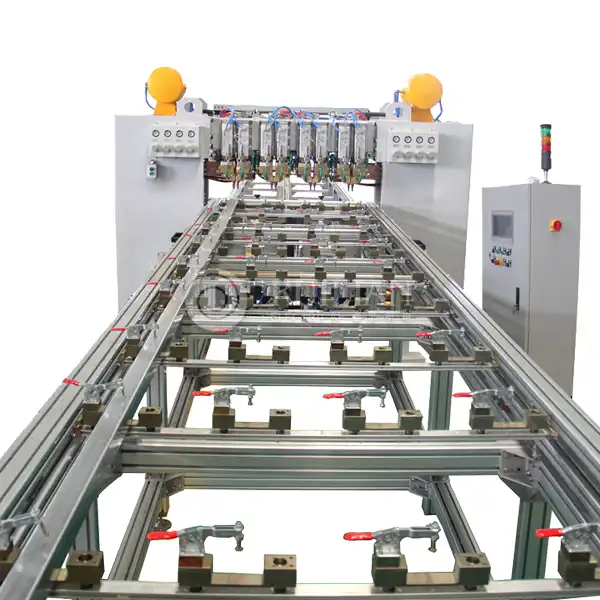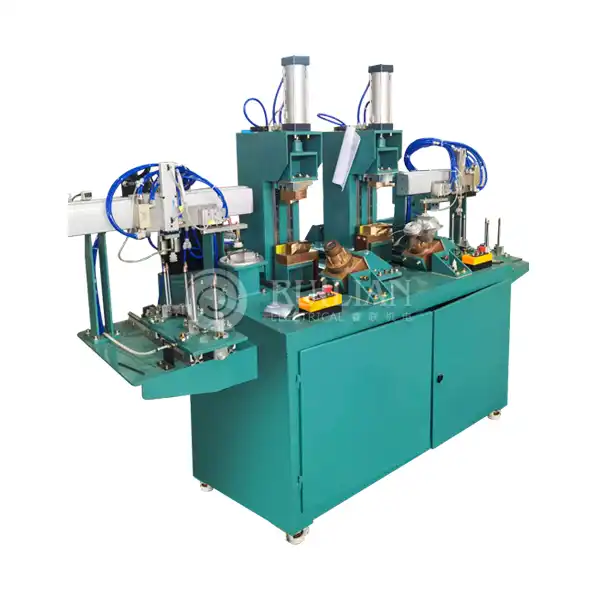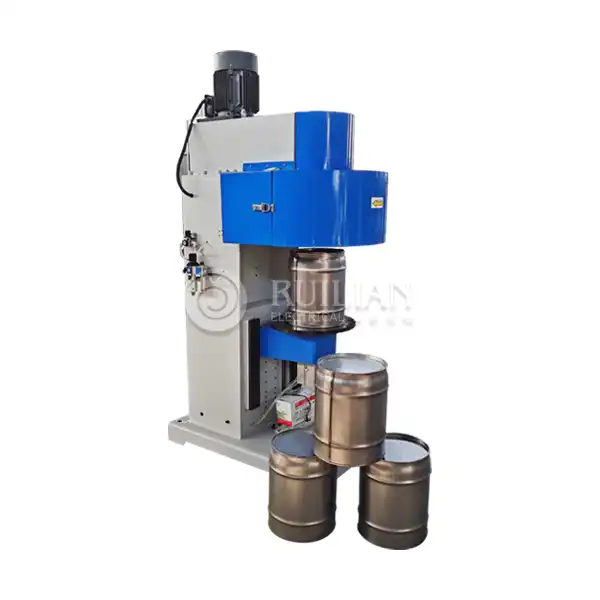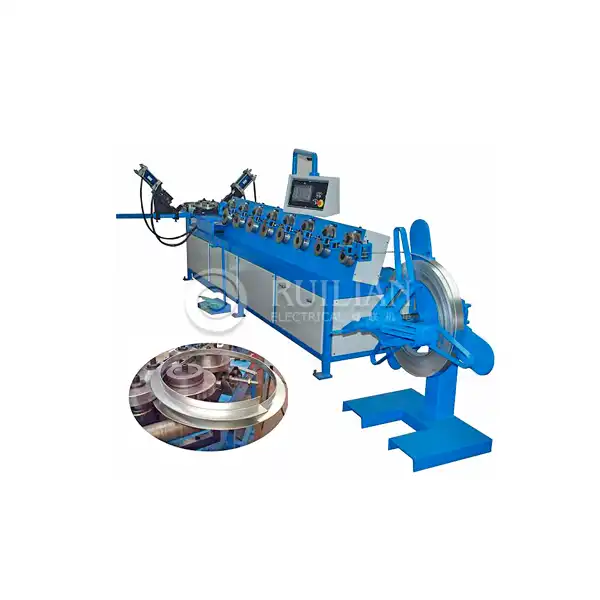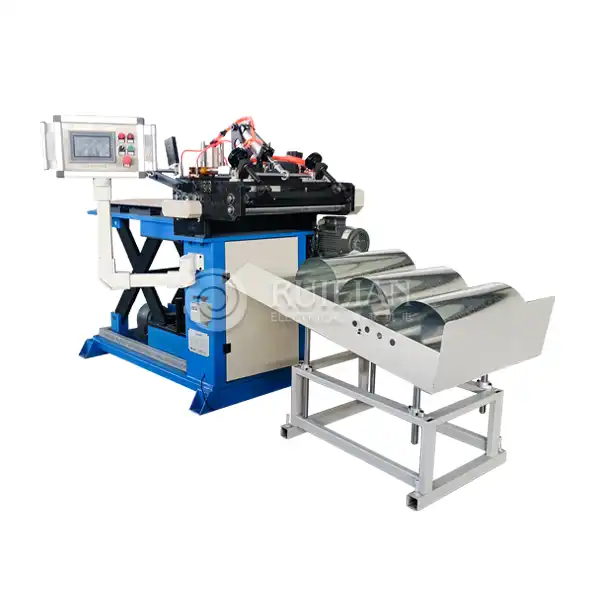How to choose welding machine?
Selecting the right welding machine is crucial for achieving high-quality welds and maximizing productivity in various industries. Whether you're working on ventilation systems, home appliances, aerospace components, or marine vessels, the choice of welding equipment can significantly impact your project's success. In this comprehensive guide, we'll explore the key factors to consider when choosing a welding machine, with a special focus on Resistance Straight Seam Welding Machines.
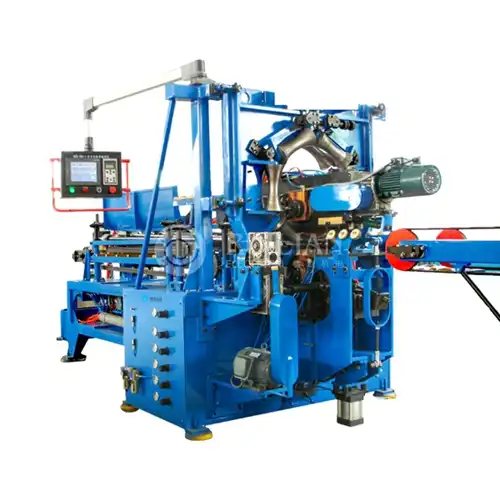
Understanding Different Types of Welding Machines
Before diving into the selection process of welding machines, it's crucial to understand the various types available in the market. Each type offers distinct advantages and is suited for specific applications, allowing users to choose the best fit for their projects.
MIG (Metal Inert Gas) Welders are widely recognized for their versatility and ease of use. They employ a continuous wire feed and an inert gas shield, making them ideal for welding both thin and thick materials. MIG welders are particularly popular in automotive and fabrication industries due to their speed and efficiency.
TIG (Tungsten Inert Gas) Welders, on the other hand, provide a higher level of precision. This method uses a non-consumable tungsten electrode and is excellent for thin materials and intricate welds. TIG welding is often preferred for stainless steel and aluminum applications, where aesthetics and strength are paramount.
Stick Welders, or Shielded Metal Arc Welders, are favored for their portability and ability to work well in outdoor conditions. They are effective for welding thicker materials and are commonly used in construction and maintenance tasks.
Flux-Cored Welders offer the advantage of being able to weld without shielding gas, making them suitable for outdoor work or windy environments. They are particularly useful in heavy fabrication and construction applications.
Resistance Welders utilize electrical resistance to generate heat and pressure, resulting in strong welded joints. Among these, Resistance Straight Seam Welding Machines stand out for their efficiency in joining long, straight seams in sheet metal applications. These machines excel in high-volume production settings, where consistent quality and speed are essential.
Ultimately, understanding the strengths and applications of each type of welding machine allows you to make informed decisions that align with your specific project needs. Whether you require precision, portability, or efficiency, selecting the right welding machine is key to achieving successful results in your fabrication endeavors.
Key Factors to Consider When Choosing a Welding Machine
Selecting the ideal welding machine involves evaluating several crucial factors:
1. Material Compatibility
Different welding machines are designed to work with specific materials. For instance, Resistance Straight Seam Welding Machines excel in joining thin sheets of similar metals, such as steel, stainless steel, and aluminum alloys. Consider the types of materials you'll be working with most frequently and choose a machine that's compatible with those materials.
2. Power Requirements and Output
The power output of a welding machine directly affects its performance and the thickness of materials it can weld. Resistance Straight Seam Welding Machines typically require a substantial power supply due to the high currents involved in the welding process. Ensure that your facility can accommodate the power requirements of the machine you're considering.
3. Duty Cycle
The duty cycle refers to the amount of time a welding machine can operate continuously within a 10-minute period without overheating. For high-volume production environments, a machine with a higher duty cycle, like many Resistance Stitchwelders, is essential to maintain productivity and prevent downtime.
4. Weld Quality and Consistency
The quality and consistency of welds are paramount in many industries. Resistance Straight Seam Welding Machines are known for producing uniform, high-quality welds along straight seams, making them ideal for applications where appearance and structural integrity are crucial.
5. Automation Capabilities
In today's fast-paced manufacturing environment, automation can significantly boost productivity. Many modern Resistance Straight Seam Welding Machines offer automation features, such as programmable weld schedules and integration with robotic systems, allowing for enhanced efficiency and repeatability in high-volume production scenarios.
6. Versatility and Adaptability
While specialized machines like Resistance Straight Seam Welders excel in their niche, consider whether you need a more versatile machine that can handle various welding processes. Some manufacturers offer multi-process welders that can adapt to different welding techniques, providing flexibility for diverse projects.
7. Cost and Return on Investment
Welding machines represent a significant investment, and it's crucial to balance initial costs with long-term benefits. While Resistance Straight Seam Welding Machines may have a higher upfront cost, their efficiency and consistency can lead to substantial savings in labor and material costs over time, especially in high-volume production environments.
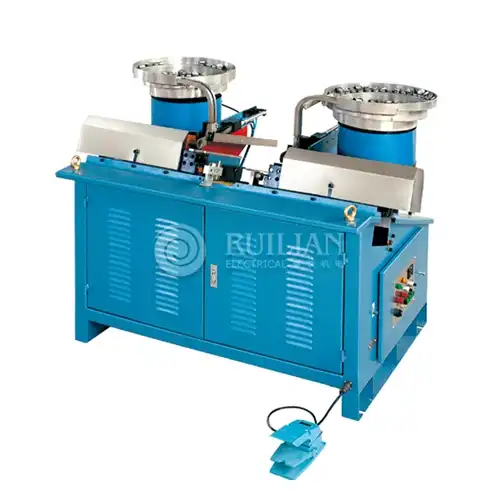
Specialized Considerations for Resistance Straight Seam Welding Machines
When specifically evaluating Resistance Welding Machines, keep these additional factors in mind:
1. Seam Length Capacity
Consider the maximum length of seams you'll need to weld. Different models offer varying seam length capacities, so choose one that accommodates your typical workpiece sizes.
2. Electrode Material and Configuration
The electrode material and configuration play a crucial role in weld quality and electrode life. Copper alloy electrodes are common, but some applications may require specialized materials. Evaluate options for water-cooled electrodes for high-volume production.
3. Control Systems
Advanced control systems in modern Resistance Straight Seam Welding Machines allow for precise adjustment of welding parameters, such as current, pressure, and weld time. Look for machines with user-friendly interfaces and the ability to store multiple weld schedules for different materials and thicknesses.
4. Maintenance Requirements
Consider the maintenance needs of the machine, including electrode replacement frequency and overall system upkeep. Machines with easily accessible components and clear maintenance guidelines can minimize downtime and extend the equipment's lifespan.
Conclusion
Choosing the right welding machine is a critical decision that can significantly impact your production capabilities and weld quality. By carefully considering factors such as material compatibility, power requirements, and specific application needs, you can select a machine that aligns perfectly with your welding objectives. For applications involving long, straight seams in sheet metal, Resistance Straight Seam Welding Machines offer unparalleled efficiency and consistency.
At RUILIAN, we understand the complexities of selecting the ideal welding equipment for your specific needs. As a reliable welding and complete equipment supplier, we offer a wide range of application solutions, including specialized Resistance Straight Seam Welding Machines. Our expertise spans various industries, from ventilation engineering and home appliance manufacturing to aerospace and marine vessel construction. To learn more about our products and how we can help optimize your welding processes, don't hesitate to reach out to us at ry@china-ruilian.cn, or visit our website at www.rlseamwelding.com for more information.
References
1. American Welding Society. (2021). Welding Handbook, 10th Edition. Miami, FL: AWS.
2. Resistance Welding Manufacturing Alliance. (2020). Resistance Welding Manual, 5th Edition. Philadelphia, PA: RWMA.
3. O'Brien, R. L. (Ed.). (2004). Welding Handbook: Welding Processes, Part 2 (Vol. 3). American Welding Society.
4. Zhang, H., & Senkara, J. (2011). Resistance Welding: Fundamentals and Applications. CRC Press.
5. Jenney, C. L., & O'Brien, A. (Eds.). (2001). Welding Science and Technology. American Welding Society.


